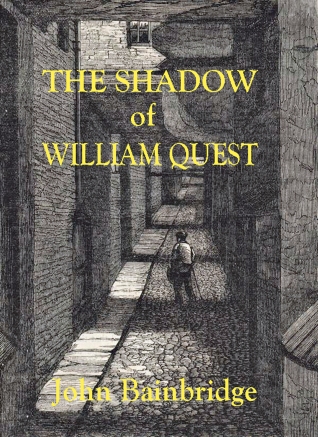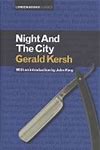When you think about it a large proportion of published thrillers are about revenge. It is one of the great sub-genres of fiction. Vengeance is a considerable motivating force. And the quest to mete out vengeance keeps many a reader turning the page.
 The need to seek revenge is an unpleasant but undeniable human instinct. Turning the other cheek might be the best real-life policy, but it simply won’t do in a thriller. The Bible tells us that “vengeance is mine, saith the Lord, I will repay.”
The need to seek revenge is an unpleasant but undeniable human instinct. Turning the other cheek might be the best real-life policy, but it simply won’t do in a thriller. The Bible tells us that “vengeance is mine, saith the Lord, I will repay.”
Admirable, but not quite what thriller readers want to hear.
I was amused at a review of my Victorian thriller “The Shadow of William Quest”. The reviewer suggested he had seen it all so many times before. The poor boy making his way in the world and seeking retribution against those who had crossed him.
Too right you have, chum! That was the whole point of my Quest novel.
I deliberately set out to write a book in this very sub-genre of revenge thrillers. That’s what my William Quest book is really all about. It’s not for nothing my anti-hero is called William Quest. I was gratified that the reviewer saw, and mentioned in his review, that it was Bruce Wayne and Batman territory. A terrific compliment to be mentioned in the same sentence.
Remember Batman? Bruce Wayne, a young lad at the time, sees his parents gunned down in an alley. When he grows up he becomes the caped crusader imposing his own version of justice on sundry villains.
In a nutshell there you have the basic plot of a revenge thriller. It might be as blatant as Batman or rather more subtle.
Geoffrey Household’s classic thriller “Rogue Male”, opens with the unnamed hero in Germany, aiming his rifle at Adolf Hitler. The first-person narrator describes his actions throughout much of the book as a ‘sporting stalk’ – to see if he can get away with it. He even denies ever intending to take the shot. Only later do we discover the revenge thriller aspect. That he had every intention of shooting. And that he has a good reason for doing so. In his later novel “The Watcher in the Shadows”, Household twists the whole premise around by telling the whole tale from the point of view of the victim of the avenger, a novel and very exciting twist. Another neglected novel well worth seeking out.
Even going back to medieval ballads, we have Robin Hood. Why is he in the greenwood as an outlaw? Because the Norman overlords have put him there because of their harsh laws. Much of the rest of the stories of the famous wolfshead are about his quest for vengeance. My Robin Hood novels “Loxley” etc. certainly are about that.
The motivations in the modern revenge thriller are manifold. The hero, or very often the anti-hero, might be fighting back for very personal reasons. Someone has wiped out his family, or launched a war of attrition against him personally. Or he might be what I call a second-person revenger, where he seeks vengeance or at least intervention for something that’s happening to somebody else, but where he is emotionally or politically engaged.
My William Quest might take up the armed struggle of vengeance to settle personal scores, but he then goes on to recognise that there are other victims in society who might benefit from having an avenger on their side. One of my American reviewers kindly mentioned Rafael Sabatini’s “Scaramouche” as well as Baroness Orczy’s “Scarlet Pimpernel” novels when trying to describe my Quest novel. I was very flattered at such comparisons.
“Scaramouche” is a wonderful example of the revenge thriller. It might technically be an historical novel, but at its roots it is one hell of a thriller. Set just before the French Revolution Andre-Louis Moreau is set on the path of vengeance by the murder of a friend by a decadent aristocrat who just happens to be the finest swordsman in France. He swears revenge. And then spends much of the book getting himself into a position where he might strike back at his adversary, and solving the knotty problem of just exactly how you teach yourself to cross swords with such a noted duellist. It’s all cracking stuff, a real page-turner by a novelist who is sadly neglected these days. It’s worth reading as it demonstrates quite admirably the plot-structure of the revenge novel, whether you describe it as a thriller or not.
And the avenger can very successfully be a woman, and the plot domestic. A great example is Magdalen Vanstone in Wilkie Collins’ classic novel “No Name”. Here the need for vengeance comes from the the unfair laws on illegitimacy that prevailed at the time. Collins was the master of the Sensation Novel. Thrillers have deep roots in those Victorian Sensation novels.
The Victorian novelist Charles Reade suggested that the great plot-line of most fiction should be along the lines of ‘Make ‘em laugh, make ‘em cry, make ‘em wait!’
And if you want a thriller to work you need to build up very slowly to the final vengeance, the bloody denouement. That doesn’t mean that the novel should be devoid of conflict up to that point. There have to be lots of other minor conflicts, near-misses, moments when the tables are turned. Times when those who are targeted by the avenger come close to removing – usually violently – the avenger himself.
In a way I made this easier for myself in “The Shadow of William Quest” by making Quest a kind of social functionary, taking on the evils – and the evil – of society on behalf of a wider and persecuted population. He only gets near to his real quarry at the end of the book. Though there are run-ins long before that.
And as my novel is set in the 1850s, we don’t have to bother very much with the constraints of political correctness. This was the age of sword-sticks, lead-weighted life-preservers, bludgeons, coshes, and great hulking walking canes of hard-wood and blackthorn. Society was unsafe. People rarely travelled into the sinister hinterlands of Victorian England without some form of protection. My William Quest has quite an armoury at his disposal.
Believe me, he needs every last weapon!
I’m currently writing the fourth William Quest novel, which will be out later in the year. Having devoted much of the first to the genre of the revenge novel, I’m aiming to go even further in the new one. I always have liked thrillers where the hunter becomes the hunted. Which is all I’ll say about it at the moment.
But to conclude, I would just like to make the case of the revenge thriller being an important sub-genre of the thriller as such. Revenge is a dish best served cold? Maybe, at least for a while in the pages of your novel. The dish best served cold builds up both the tension and the excitement.
So that when the cold revenge becomes the hot revenge, the thrills burst out of the page.
If you haven’t read “The Shadow of William Quest” yet it’s out in paperback and on Kindle. And only 99 pence/cents on Kindle until Monday night



 published by London Books with an excellent, atmospheric and very informative introduction by John King. I really recommend that this is the edition that you seek out – not least because it is beautifully produced.
published by London Books with an excellent, atmospheric and very informative introduction by John King. I really recommend that this is the edition that you seek out – not least because it is beautifully produced. The need to seek revenge is an unpleasant but undeniable human instinct. Turning the other cheek might be the best real-life policy, but it simply won’t do in a thriller. The Bible tells us that “vengeance is mine, saith the Lord, I will repay.”
The need to seek revenge is an unpleasant but undeniable human instinct. Turning the other cheek might be the best real-life policy, but it simply won’t do in a thriller. The Bible tells us that “vengeance is mine, saith the Lord, I will repay.”



